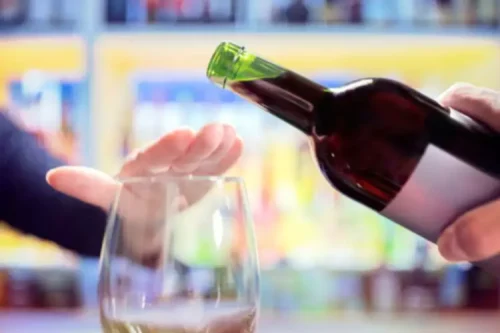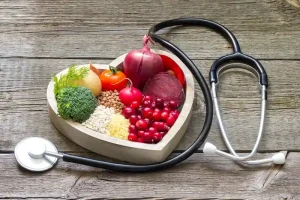
Recovery is possible, and many individuals have successfully broken free from the grip of addiction. Let’s explore the steps involved in breaking the cycle and reclaiming one’s life. The addiction cycle is often described as a three-stage process, each stage feeding into the next, creating a self-perpetuating loop that can feel impossible to escape. Let’s break down these stages and examine how they work together to keep individuals trapped in addiction.
Addiction Stage 2: Abuse
- Additionally, many individuals struggling with addiction find themselves on the wrong side of the law, facing charges related to possession, intoxication, or crimes committed to obtain drugs.
- Addiction develops over time and usually begins with misuse, moving toward abuse and resulting in addiction.
- As a person continues to use drugs, the brain adapts by reducing the ability of cells in the reward circuit to respond to it.
- For example, some people with substance use disorders are particularly vulnerable to stress-induced relapse, but others may be more likely to resume substance use after being exposed to drug-related cues.
The ANA aims to enhance our ability to diagnose and treat addiction disorders with a more comprehensive understanding of their underlying neurobiological mechanisms. The reinforcing impact of substances diminishes with repeated use over time; this is the phenomenon of tolerance.[10] Tolerance typically results in increased or more frequent substance use in chase of the original effect. Tolerance also shifts the individual’s emotional baseline, predisposing them to more negative emotions when the substance is absent. This leads to an ongoing withdrawal state in which low mood, anxiety, and physical illness are the baseline. Given the discomfort of the withdrawal state, substance use naturally increases. It occurs when a person stops taking drugs and begins to experience withdrawal symptoms.
In Summary: The Withdrawal/Negative Affect Stage and the Extended Amygdala
This study indicated that alcohol induces heat shock factor 1 transcriptional activity to trigger a specific coordinated adaptation in GABAergic presynaptic terminals in cultured cortical neurons. This mechanism could explain some of the changes in synaptic function that occur soon after alcohol exposure, and may underlie some of the more enduring effects of chronic alcohol intake on local circuit function. Addiction is a chronic, often relapsing disorder characterized cycle of addiction by a compulsive need to seek and use the substance or engage in the behavior, despite the negative consequences. This stage is marked by a loss of control over use and significant changes in behavior and brain function. The neurotransmitters and reward circuits involved in addiction are profoundly affected, with substances like alcohol altering GABAA and GABAB receptors, leading to tolerance and impacting treatments aimed at promoting abstinence.

Extreme Weather Events Linked to a Surge in Mental Health Disorders Across Southeast Asia

The reasons why substance use disorders and mental disorders often occur together are not clear, and establishing the relationships between these conditions is difficult. Second, substance use disorders may increase vulnerability for mental disorders,62-64 meaning that the use of certain substances might trigger a mental disorder that otherwise would have not occurred. As these possibilities are not mutually exclusive, the relationship https://ecosoberhouse.com/ between substance use disorders and mental disorders may result from a combination of these processes. Furthermore, these neuroadaptations occur in the 3 distinct neurobiological stages of intoxication/binge, withdrawal/negative affect, and preoccupation/anticipation. The focal regions of the brain involved with these stages in respective order are the basal ganglia, the extended amygdala, and the prefrontal cortex.
- Over time, repeated drug use can actually change the structure and function of the brain.
- Information from studies can provide explanations about the reasons why some individuals can go through these stages on their own.
- Addiction leads to harmful consequences and lasting brain changes, setting it apart from other substance misuse.
- The finding on the wheel of change crosses gender, age, social status, and other personal inclination.
- Chronic drug exposure-induced neurochemical changes in systems that are implicated in acute drug reward are called within-system neuroadaptations.
- These findings highlight sex-specific differences in VTA endocannabinoid activity that may regulate responses to aversive intrinsic properties to cannabinoids and contribute to differences in cannabinoid consumption.
- The ANA focuses on subdomains of executive function that are particularly relevant to addiction.
- More of the drug is needed to achieve the same effect, and withdrawal symptoms become more pronounced when use is discontinued.
- This involves developing healthy coping mechanisms for stress, anxiety, and other triggers that might have previously led to substance use.
Addiction is defined as obsessive thinking and compulsive need for drugs, alcohol, food, sex or anything despite the resulting negative consequences. Addiction includes the development of tolerance combined with withdrawal symptoms. In addition to tolerance, an addict or alcoholic will experience intense physical cravings for the drug and an emotional obsession to take alcohol or drugs regardless of the consequences.

The rest of this chapter weaves together the most compelling data from both types of studies to describe a neurobiological framework for addiction. The more risk factors someone has, the more likely drug use will result in addiction. This final stage circles back to the intoxication stage once a person uses drugs again. The earlier in the cycle that help is sought, the better the chances of avoiding the most severe consequences of addiction. The Addiction Triangle often includes strained relationships as one of its corners. Trust is eroded, communication breaks down, and the needs of the addiction often take precedence over the needs of loved ones.

Continued Use / Abuse
- Other factors protect people from developing a substance use disorder or addiction.
- Brain-imaging studies have revealed a decreased density of cannabinoid 1 (CB1) receptors in patients with alcohol use disorder.[18] The clinical consequences of an upregulated «anti-reward» system will present as irritability, anxiety, and dysphoria.
- Many people don’t understand why or how other people become addicted to drugs.
- Customizing treatment approaches using individual neurobiology holds great promise for improving the effectiveness of addiction treatment.

Aún no hay comentarios, ¡añada su voz abajo!